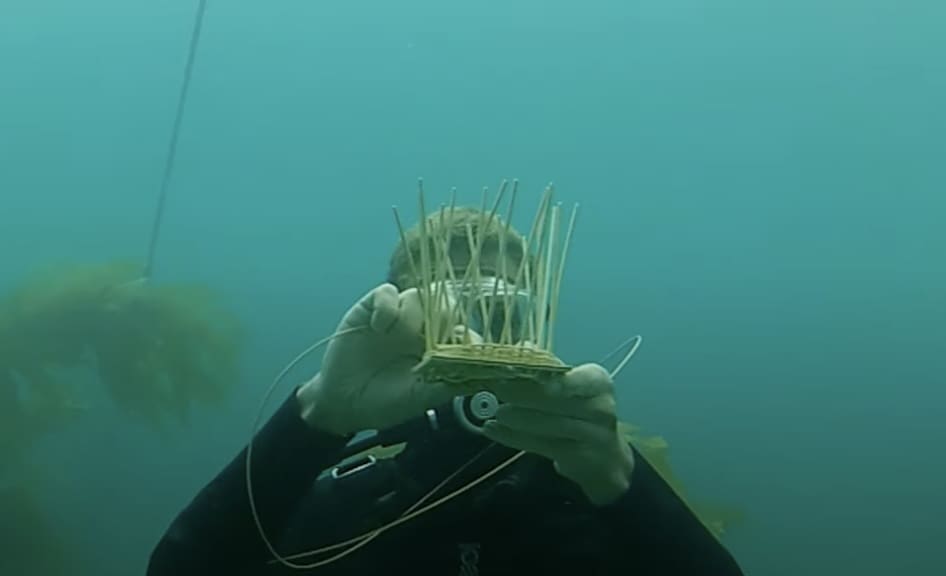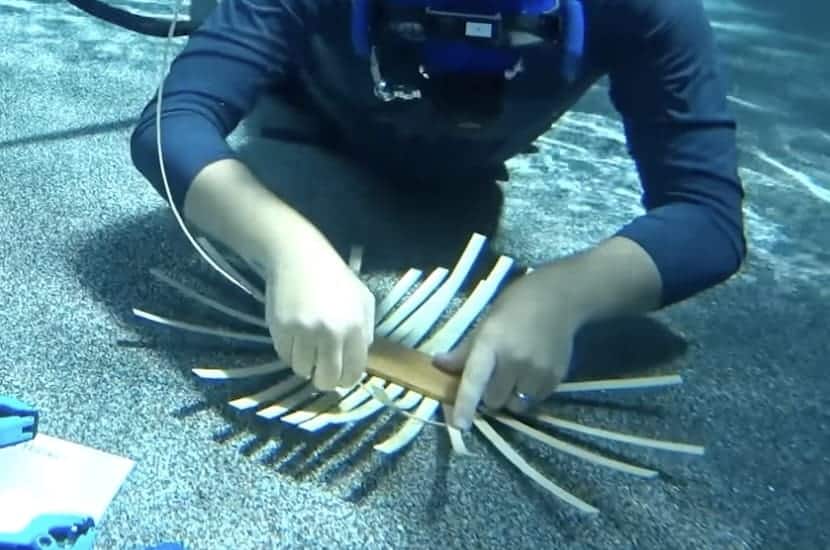When we think of college degrees and the subsequent job market, specific images come to mind: the hopeful graduate with a mortarboard and diploma ready to take on the world.
However, lurking in the corners of college folklore is the term “underwater basket weaving,” a phrase that conveys quite a different image—one of futility, impracticality, and sometimes, the absurd lengths to which higher education might go to offer “unique” courses. Read on as we unravel the origins of underwater basket weaving and how it symbolized the more romantic side of academia, where job prospects can sometimes seem as elusive as the practical applications of weaving baskets beneath the waves.
Table of Contents
- The Woven Tale Of Underwater Basket Weaving: A Deep Dive Into Academic Folklore
- The Tangled Weave Of Education And Employment
- Related Content
The Woven Tale Of Underwater Basket Weaving: A Deep Dive Into Academic Folklore
When we think of college degrees and the subsequent job market, specific images come to mind: the hopeful graduate with a mortarboard and diploma ready to take on the world. However, lurking in the corners of college folklore is the term “underwater basket weaving,” a phrase that conveys quite a different image—one of futility, impracticality, and sometimes, the absurd lengths to which higher education might go to offer “unique” courses.
I recall the days spent wandering the campus grounds, the air rich with my fellow students’ dreams and aspirations, when we’d just about pursued a degree in underwater basket weaving. This jest, laced with a hint of collegiate cynicism, wasn’t just about donning scuba gear for academia.
Instead, it was a wry commentary on the fear of investing time and effort into a degree that might be ineffectual—a diploma that promised neither a stepping stone into the workforce nor an enhancement to our lives or livelihoods.
It’s intriguing, then, to delve into the origins of this term that has evolved beyond a mere quip among weary students. It’s become a cultural touchstone that captures the collective anxiety about the value of higher education in an uncertain job market.
To unpack and understand why this phrase has clung to the fabric of student lore and why it persists as an urban legend is to explore the intersection of education, employment, and the sometimes harsh realities that greet us post-graduation.

Underwater Basket Weaving – The Phrase That Dipped Into Pop Culture
Underwater basket weaving is a phrase that many might chuckle at, having heard it in the context of a joke about easy and irrelevant college courses. The term has floated around since at least the mid-20th century.
It was initially used to describe classes that were thought to be on the more accessible end of the academic spectrum. In the literal sense, the phrase seems nonsensical—how and why would anyone weave a basket underwater?
And yet, it’s this blend of literal imagery and symbolic meaning that has given the phrase such staying power.
Weaving baskets often involves soaking materials like willow rods in water to make them pliable. There’s a certain truth to the aquatic association, as water plays a critical role in preparing weaving materials.
However, the weaving traditionally happens above water, in the air, where the weaver can see and control their work.
The image of someone submerged, diligently weaving a basket, is vivid and memorable but divorced from reality.
Yet, it was cited quite seriously in a 1956 issue of “The American Philatelist,” referring to an Alaskan village where underwater basket weaving was reportedly the principal industry. The description, whether factual or a flight of fancy, suggested that the actual weaving took place with the weaver and materials completely submerged—an early sign of the term being used more literally than one might expect.

Academic Standards And The Underwater Weaving Of Careers
By the mid-1950s, the phrase had become a pejorative term for critiquing educational standards. The Boston Globe in 1953 mentioned it in passing when describing “snap courses”—classes that were easy to pass.
In 1956, a letter to the editor of the Los Angeles Times lamented the falling academic rigor, citing underwater basket weaving, among other seemingly frivolous studies. These mentions capture a growing sentiment of the times: a concern that some educational paths might be less about rigorous study and more about granting degrees with little substance.
As the 1960s dawned, underwater basket weaving had firmly entrenched itself in the American lexicon as a stand-in for courses that, while possibly entertaining, would hardly prepare one for the competitive job market.
This era witnessed a push towards more practical education directly correlated with employment prospects. It became a time of soul-searching for educational institutions, pressured to justify the practicality and rigor of their offerings.
The term persisted through the years, an inside joke among students and a pointed barb on the side of academia. But it also raised serious questions about the value of a degree and the responsibilities of educational institutions to ensure their graduates were employable.
Social Sciences And The Shadow Of The Underwater Basket
In more recent times, the humanities and social sciences have faced scrutiny, sometimes characterized as modern-day underwater basket weaving disciplines. The metaphor extends to subjects criticized for lack of rigor or relevance to the job market despite these fields adopting increasingly scientific methodologies.
Op-eds and public discourse have questioned the practical value of specific courses within these disciplines, igniting debates about the role and value of a broad education versus a strictly vocational one.
This characterization, however, often overlooks the intrinsic value of the social sciences and the humanities in fostering critical thinking, cultural understanding, and the capacity to navigate a rapidly changing social landscape.
Critics might argue that equating these fields to underwater basket weaving does a disservice to the breadth and depth of knowledge they provide, which may not be directly job-related but are invaluable to a well-rounded education.

The Tangled Weave Of Education And Employment
The saga of underwater basket weaving is more than a quirky footnote in the annals of academic history—it reflects the ongoing conversation about the purpose of education. It touches upon the tension between learning for the sake of knowledge and learning for the sake of employment.
Ultimately, the mythos of underwater basket weaving serves as a colorful allegory for the perceived disconnect between some academic pursuits and the ‘real world’ after graduation. It’s a reminder that while education can be an end in itself, the world often demands tangible skills and clear-cut qualifications.
The balance between the two remains a topic of vibrant and, at times, contentious debate—a debate that will continue as long as students don cap and gown, seeking to weave their path through the complex tapestry of life after college.
If you are interested in seeing how Mondoro can help you with your weaving needs– we would love to talk to you about how we can help you. We help you with most of your weaving needs, except we do not weave underwater.
Find out more about how Mondoro can help you create, develop, and manufacture excellent home decor and furniture products – don’t hesitate to contact me, Anita. Check out my email by clicking here or become a part of our community and join our newsletter by clicking here.
Mondoro gives out a FREE Lookbook to anyone interested. You can receive a copy of our latest Lookbook by clicking here.
Listen to our Podcast called Mondoro Company Limited. You can find it on all major podcast platforms. Try out listening to one of our podcasts by clicking here.
Subscribe to our Mondoro Company Limited YouTube Channel filled with great videos and information by clicking here.
Related Content
Where Did “Underwater Basket Weaving” Come From?
Underwater basket weaving is an English language idiom used to describe a fictional college course or degree that is entirely useless. The term was first used in print in the 1950s; since then, it has been used to describe university classes or degrees considered useless. The term underwater basket weaving is in the Urban Dictionary.
You can learn more by reading Where Did “Underwater Basket Weaving” Come From? by clicking here.
Water Hyacinth Baskets: Sustainable Storage Solutions
Water hyacinth baskets are products that have gained popularity in recent years. These natural baskets are beautiful and versatile but are also eco-friendly and sustainable. We explore water hyacinth, how it is grown, dried, and woven, and why it is considered eco-friendly. Read on as we also explore eleven ways water hyacinth baskets can be sustainable storage solutions.
You can discover more by reading Water Hyacinth Baskets: Sustainable Storage Solutions by clicking here.
About Weaving Water Hyacinth Baskets Into Home Décor Products
Water hyacinth is used to be a nuisance on the waterways around Vietnam as the water hyacinth plant grows on the water and is highly fast-growing. Today, the plant is cut, dried, and then handwoven into beautiful baskets and other home decor products. The water hyacinth material can be left in its natural color, dyed, or painted in various shapes and forms.
You can learn more by reading About Weaving Water Hyacinth Baskets Into Home Décor Products by clicking here.

